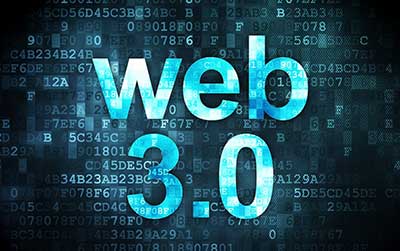Relevance: GS-3: Science and Technology- developments and their applications and effects in everyday life.
Key phrases: Web 3.0, Web 2.0, Web 1.0, Platform, Decentralization, Block chain technology, IOT, Transparency.
Why in News?
- Web 3.0 is the potential next phase of the internet wherein the internet will be decentralised and run on block chain technology.
What is Web 3.0?
- Web3 (also known as Web 3.0 and sometimes stylized as web3) is an idea for a new iteration of the World Wide Web based on block chains, which incorporates concepts including decentralization and token-based economics.
- The concept of Web3, also called Web 3.0, used to describe a potential next phase of the internet, created quite a buzz in 2021.
- The model, a decentralised internet to be run on block chain technology, would be different from the versions in use, Web 1.0 and Web 2.0. In web3, users will have ownership stakes in platforms and applications unlike now where tech giants control the platforms.
Web 3.0 vs Web 2.0 vs Web 1.0
- Web 3.0 is the potential next phase of the internet wherein the internet will be decentralised and run on blockchain technology.
- Of the earlier versions, Web 1.0 was mostly static where users would go to a website and read and interact with static information; the differentiating characteristic of Web 2.0 compared to Web1.0 is that users can create content. They can interact and contribute in the form of comments, registering likes, sharing and uploading their photos or videos and perform other such activities.

What are some of the concerns with Web 2.0?
- In Web 2.0, most of the data in the internet and the internet traffic are owned or handled by very few behemoth companies. This has created issues related to data privacy, data security and abuse of such data. Web3 offers a solution to these problems.
- There is a sense of disappointment that the original purpose of the internet has been distorted.
Features of Web 3.0:
It does have a few defining features:
- Decentralization: This is a core tenet of Web 3.0. In Web 2.0, computers use HTTP in the form of unique web addresses to find information, which is stored at a fixed location, generally on a single server. With Web 3.0, because information would be found based on its content, it could be stored in multiple locations simultaneously and hence be decentralized. This would break down the massive databases currently held by internet giants like Facebook (now Meta) and Google, and would prevent their undue enrichment by handing greater control to users. With Web 3.0, the data generated by disparate and increasingly powerful computing resources, including mobile phones, desktops, appliances, vehicles, and sensors, will be sold by users through decentralized data networks, ensuring that users retain ownership control.
- Trust less and permission less: In addition to decentralization and being based upon open source software, Web 3.0 will also be trust less (i.e., the network will allow participants to interact directly without going through a trusted intermediary) and permission less (meaning that anyone can participate without authorization from a governing body).
- Artificial intelligence (AI) and machine learning: In Web 3.0, computers will be able to understand information similarly to humans, through technologies based upon Semantic Web concepts and natural language processing. Web 3.0 will also use machine learning, which is a branch of artificial intelligence (AI) that uses data and algorithms to imitate how humans learn, gradually improving its accuracy. These capabilities will enable computers to produce faster and more relevant results in a host of areas like drug development and new materials, as opposed to merely targeted advertising that forms the bulk of current efforts.
- Connectivity and ubiquity: With Web 3.0, information and content are more connected and ubiquitous, accessed by multiple applications and with an increasing number of everyday devices connected to the web—an example being the Internet of Things.
Conclusion:
- Web3 will deliver “decentralized and fair internet where users control their own data”.
- The spirit of Web3 is Decentralized Autonomous Organization (DAO) which is that all the business rules and governing rules in any transaction are transparently available for anyone to see and software will be written conforming to these rules.
- Crypto-currency and block chain are technologies that follow the DAO principle. With DAO, there is no need for a central authority to authenticate or validate.
Source: The Hindu
Mains Question:
Q. The massive databases currently held by internet giants like Facebook (now Meta) and Google created issues related to data privacy, data security and abuse of such data. Web 3.0 can be a potential solution to such issues. Discuss how it will address the problems of data monopoly, data privacy, data security and abuse of such data? Critically examine.









